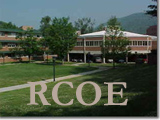Web sites for Students Whose Primary Language
is not English
Context
I used Internet Explorer to go to the site http://www.freetranslation.com.
I made up a paragraph that I would send home with a student who did not
speak English and then used the translator to translate the sentences into
Spanish. I then printed this out to put in my portfolio. This
would come in very useful if I needed to contact parents of a student who
did not speak English. Next, I used the web site translator and entered
http://www.crayola.com.
The translator translated the web site into Spanish. The next thing
I was asked to do was to go to the site http://www.englishlearner.com
and
explore and print out a page from this site. http://www.englishlearner.com
offers people who do not speak English a chance to learn how. I would
use these sites in my classroom to help students who do not speak English.
Impact
As a future teacher, I now realize the importance of using media and
technology to support learning for children whose primary language is not
English. There were many different ideas I found exploring these
sites that I could use one day in my classroom.
Alignment
Artifact 9 aligns with competency 13.3.
I now understand the importance of using media and other technology to
support learning for children whose primary language is not English.
Alignment with INTASC Standards
This artifact meets INTASC 3
because the information included in this artifact provides teachers with
information to teach diverse learners. It will be my job as a future
teacher to make sure I am meeting the needs of every student in my classroom.
This artifact allows me to connect and communicate with every student and
adapt my teaching method to diverse learners.
